This recipe is not about using a pre-made liquid soap and adding some ingredients. It is not about using a soap bar to make liquid soap (although you can find how to do it in this link). This is a liquid soap recipe with shea butter made from scratch!
This recipe makes a genuine, natural shea butter liquid soap, with olive oil, coconut oil and, of course, shea butter. You will get a beautiful light yellow liquid soap, scented with lemongrass and lemon, ylang-ylang, or your favorite essential oils.
Table of Contents
- Making Liquid Soap
- Optional Ingredients And Shelf Life
- Soap Dilution
- Ingredients Quantities
- Is Liquid Soap Economical?
- Liquid Soap Recipe With Shea Butter
- More liquid soap recipes: Liquid Soap Recipes
- Find Where To Buy Handmade Liquid Soap
- Related Posts
- Watch These Videos Before Starting Your Recipe
Making Liquid Soap
Liquid soap from scratch is made with potassium hydroxide. It’s somehow similar to hot process, in which you have to use heat during the process. Therefore, a crock pot or an electrical stove are mandatory. Oils and potassium hydroxide lye water are mixed and stick blended under heat, until you get a soap paste.
You can use this soap paste directly or diluted to make liquid soap. When making the liquid soap with water, again, you need to heat the mixture. Heat plays a very important part in making liquid soap, so you might want to consider it when calculating its cost.
The final result, however, is a pretty golden liquid soap that is as soft and mild as any handmade soap. Superfat can’t be more than 3% (or the soap might separate). Vegetable glycerin is usually added for additional hydration to compensate the low superfat content.
Optional Ingredients And Shelf Life
To make liquid soap you will always need soap paste and water, to dilute the liquid soap. The rest of the ingredients are optional.
You can add vegetable glycerin for extra hydration and softness, as mentioned before. But, to be honest, I’ve used this liquid soap recipe with and without vegetable glycerin and I can’t find a significant difference.
Essential oils for scent may also be added up to a maximum of 3%, but it’s not really required. If you want to keep your liquid soap economical, you can use just a few drops or even leave it unscented.
Now, you can store liquid soap in two ways: as soap paste or as the final liquid soap.
Soap paste has a shelf life around one year, pending on oils’ shelf life. The final liquid soap, because of its water content, needs a preservative to be safe, or it needs to be used under a month. Both solutions as its pros and cons:
- if you store the soap paste, you need to keep making liquid soap portions that last for one month, but you save in preservative usage. You need to use 0,5%-1% depending on the preservative type. 1% of 2 liters is still 20ml.
- if you want the final liquid soap, you will need to use the preservative, making the soap more expensive. On the other hand, you save on heat and time, as you just need to make all liquid soap in one go.
So, it’s up to you, your preferences, time and what you wish your liquid soap to cost.
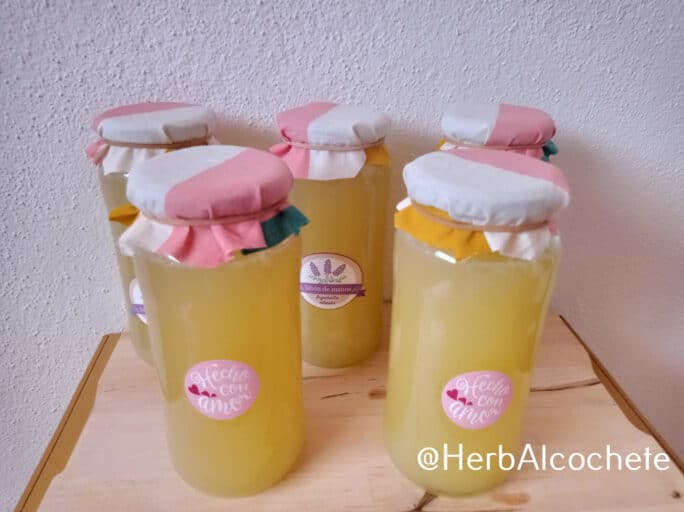
Soap Dilution
Dilution is also a matter of option. I’ve seen recipe calling for 1:1 dilution (1 portion of soap paste for 1 portion of water), but I find it quite difficult to work with. 1:2 is the minimum I am able to make and I find 1:3 still thick enough. Besides, you always use 2 to 3 pumps of soap, no matter the dilution ratio, so, by using a thick dilution, you will be sort of wasting soap.
In summary, if you want a thin soap and wish to save some money, you can use the recipe’s 1:3 dilution, or even try for 1:4 of dilution. Your soap will feel thinner, but will still wash effectively.
How do you calculate dilution?
- With this recipe, you make 500g of soap paste.
- If you use a dilution of 1:1, you will be using 1 time the soap paste weight in water: 500g. This will give you roughly a total of 1 liter of liquid soap (500g + 500g = 1kg = ~1 liter).
- With a dilution of 1:2, you will be using 2 times the soap paste weight in water, that is 1000g of water. This makes 1.5 liters of soap.
- With 1:3 dilution, you will be using 3 times the soap paste weight in water – 1500g, which makes what the recipe calls for: 2 liters of liquid soap.
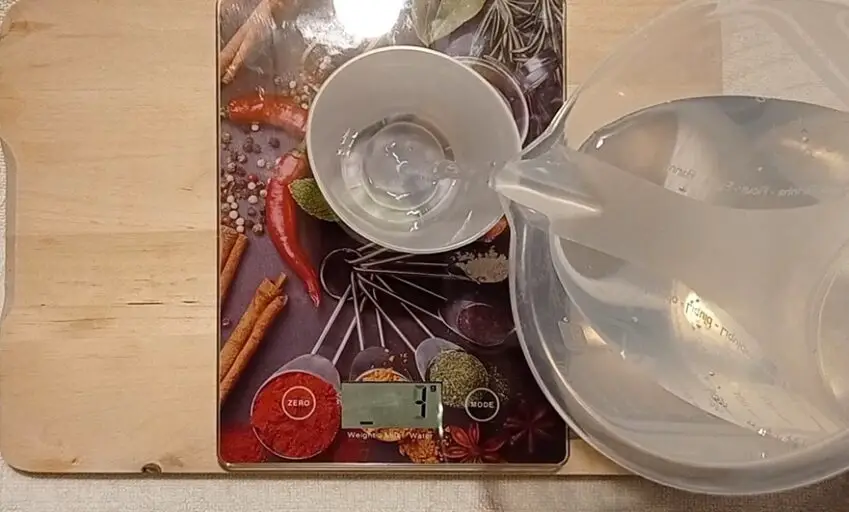
Ingredients Quantities
Depending on your storage decision, the amount of water, essential oils and vegetable glycerin varies. In the recipe, I give you the total amounts. If you wish to just make a portion of soap, just multiply by the portion percentage of total liquid soap.
For example, if you wish to make 100ml of liquid soap with a dilution of 1:3, the math for all ingredients is the following:
- 100 ml is 5% of 2 liters of liquid soap. So you will multiply all ingredients for 0,05 = 5/100 = 5%.
- soap paste: 500g x 0,05 = 25 g
- water: 1,5 lt x 0,05 = 75 ml
- Essential oil: 10 ml x 0,05 = 0,5 ml
- Vegetable glycerin: 200g x 0,05 = 10g (if you wish to add vegetable glycerin you may discount that quantity in the water)
- Liquid Germall Plus: 10 ml x 0,05 = 0,5 ml (in case the liquid soap will be used beyond one month)
Is Liquid Soap Economical?
I’ve never did the cost calculation taking into account the heat source cost. Simply because I like making liquid soap, and it’s a better product than the store-bought version. But liquid soap, because you dilute it with water, can be quite economical. Maybe not cheaper, but at least comparable with what you buy in the supermarket.
Bear in mind that, if using a preservative, you need to add it when you make the liquid soap. The preservative prevents microbes and fungus growth, which is at a minimum when the soap is made. It won’t be effective if you add it when the soap has a microbe’s culture going on already.
Liquid Soap Recipe With Shea Butter
The first liquid soap I’ve done was with olive oil and coconut oil. Then I’ve had the idea to add shea butter to it. The soap paste became softer and more fluid, resulting in a liquid soap that is more fluid, hydrating and milder, even with only a 3% superfat.
To turn this liquid soap into a shower gel, I’ve added vegetable glycerin, but for a liquid hand soap, I don’t see the need to it. Believe me, even if a 3% superfat with 8 pH might seem like a harsh soap, compared with store-bought liquid hand detergents and bath gels it’s still much milder to the skin.
The soap is scented with essential oils. In this case, as soap has gone through saponification already when you add the essential oils, you can use just any essential oil as they won’t be weakened by the chemical process.
I suggest a blend of lemongrass and lemon essential oils, or just use ylang-ylang as a single essential oil. I’ve also tried cinammon bark essential oil as well. It gives a delicious scent to the soap, but it has a high chance of causing skin irritations. These are just sugestions, you can use your favorite essential oil or essential oils blend.
Hope you enjoy making this liquid soap recipe with shea butter!!!
More liquid soap recipes: Liquid Soap Recipes
Find Where To Buy Handmade Liquid Soap
If you’re not yet ready to try to make this recipe at home – this is already an advanced soap recipe – but you still wish to enjoy natural, handmade liquid soap, you can find it in the following links:
- Goat Milk Liquid Soap (Etsy)
- Cinammon Apple Liquid Hand Soap (Etsy)
- Organic Liquid Castile Soap (Etsy)
- Cocoa and Shea Butter Liquid Soap (Etsy)Cocoa and Shea Butter Liquid Soap (Etsy)
Related Posts
- Vegetable oils: Oil Properties for Soap Making
- Essential oils: Best Essential Oils for Soap Making
- Natural colorants: How To Color Your Soap With Kitchen Ingredients
- Equipment: Where To Buy Soap Making Equipment
- Liquid Soap From Scratch Tutorial: How To Make Liquid Soap From Scratch
- More Recipes: Homemade Natural Liquid Soap Recipes
Watch These Videos Before Starting Your Recipe
Equipment
Ingredients
Soap Paste – Lye Water
- 190 g distilled water
- 80 g potash (99% potassium hydroxide)
Soap Paste – Oils
Extras for Liquid Soap
- 1,5 lt distilled water (using a dilution of 1:3)
- 10 ml Liquid Germall Plus (follow manufacturer's instructions – 0,5% of total liquid soap)
- 200 g vegetable glycerin (optional)
- 10 ml essential oils blend (optional – considering 0,5ml or 10 drops EO / 100 ml liq. soap)
Essential Oil Blend (option 1)
Essential Oil Blend (option 2)
Instructions
Get Ready!
- Wear goggles and gloves, and mask! Look at the Safety Precautions in the video above or in Safety Precautions In Soap Making
- Watch the video above or read the post How To Make Liquid Soap With Potassium Hydroxide for instructions on hoe to make liquid soap. These are generic steps for all recipes.
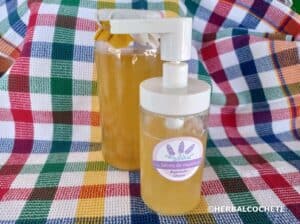
- Assemble everything: ingredients, equipment, safety equipment. Prepare your workstations. Measure all the ingredients – you may leave the extra ingredients for later. Don’t start the recipe without having everything ready!
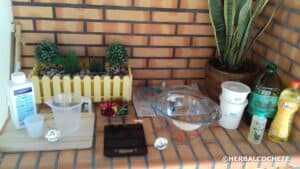
Make the Lye Water
- Make the lye solution according to How To Make Lye Water. Lye is this recipe is potash, or potassium hydroxide – it makes a bigger reaction than sodium hydroxide, be ready. Mix the solution until the vapors start to dissipate, and the water is clear.
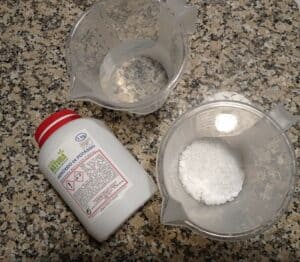
Heat The Oils
- Heat the oils in the slow cooker under LOW heat. Make sure the solid oils are completely melted.
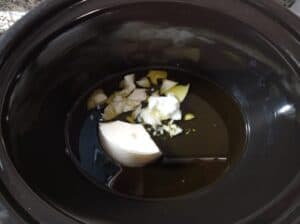
Making the Soap Paste
- Pour carefully the lye water over the heated oils – be careful as the lye water may corrode your slow cooker metalic parts. There's no need to turn off the heat in this step.
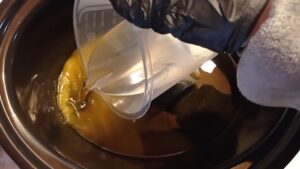
- Set the slow cooker heat to HIGH.
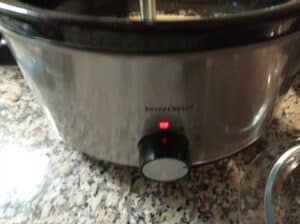
- Start mixing the soap batter with the stick blender. Use short pulses alternated with manual mixing (like a spoon).
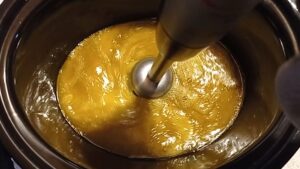
- Then every 5 minutes, let the soap rest in heat for 2-3 minutes.
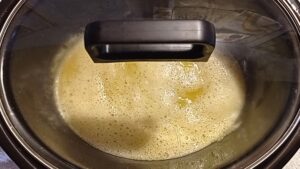
- Repeat the process for around 30 minutes. Check out How To Make Liquid Soap With Potassium Hydroxide to see all the different stick blending stages.
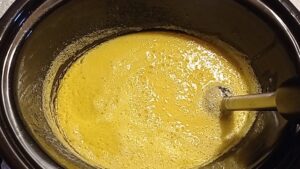
- Don't worry if the soap looks like it's separating, or it remains liquid and seems to be going nowhere. Leave the soap to rest in heat for longer to thicken. It will start to thicken at some point.
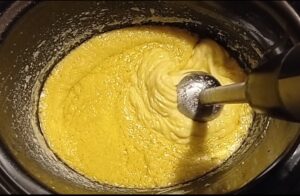
- At the end, you should have a soap paste looking like mashed potatoes.
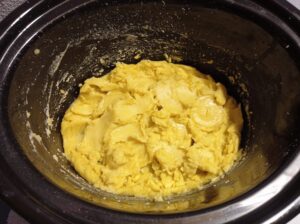
Cooking the Soap Paste
- Set the heat to LOW and let the soap paste cook for 6 hours. Mix the soap paste with a spoon, to avoid soap residue sticking to the slow cooker walls or burning. Do this every 30 minutes in the first 3 hours, then every hour.
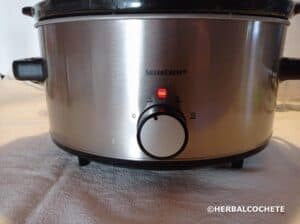
- Turn off the heat and let the soap paste rest inside the slow cooker (with lid), until it cools down completely. The final result should be a translucent soap paste, looking like yellow colored vaseline.

Testing the Soap Paste
- Test the soap for superfatting. After the soap has finished cooking, stir a tsp of soap paste into half a cup of scalding hot distilled water. Let it sit and dissolve, giving it another stir if it needs help breaking up. Let it cool completely then have a look.
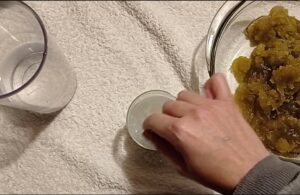
- Translucent white or clear liquid: your soap is ready.Milky opaque and oils floating: has unsaponified oils, need to cook more in LOW heat.

- Test the soap paste for lye heaviness with a pH strap. Dilute 1g soap paste into 99g of scalding hot distilled water and let it cool to room temperature. Take the pH straps (Litmus test papers) and check to see if the soap is between 9-10. Above 10 your soap is lye heavy. Allow the paper to dry completely for the most accurate result.
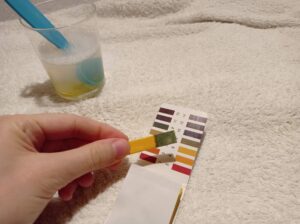
Making the Liquid Soap
- If you wish to make all the liquid soap at once, use the quantities in the Extra Liquid Soap ingredients section. The preservative (liquid germall plus) in NOT optional is this case.
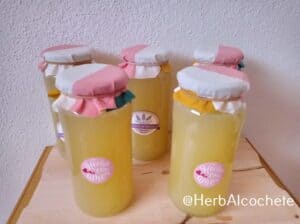
- If you wish to make liquid soap by portions in order to avoid using the preservative (liquid germall plus), check out also How To Make Liquid Soap With Potassium Hydroxide in the "Starting your liquid soap". For reference, use the following quantities, for 100ml of liquid soap:– 1 portion of soap paste (25g) and 3 portions of distilled water (75g)– 0,5 ml of essential oil blend– 10 ml of vegetable glycerin
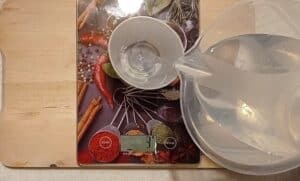
- The essential oils and the vegetable glycerin are optional. Vegetable glycerin is an humectant that will turn the soap softer and more hydrating. In this recipe, I didn't feel the need to add vegetable glycerin, but it's your choice.
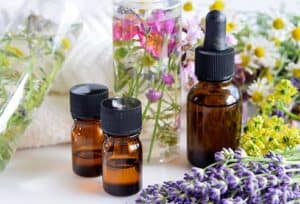
- Add the soap paste and water (and vegetable glycerin if that's the case) into the slow cooker. Set the heat to HIGH.

- Let the ingredients heat for one hour and mix/cut the soap paste in small bits to better dissolve in the water.
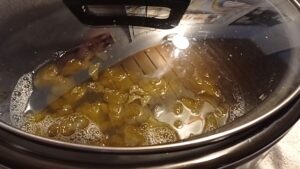
- Set the slow cooker to LOW and let the soap cook for some hours, until the soap paste is gone. This part does require patience and some trial and error. Add some water if the soap paste doesn't seem to be dissolving after 1 hour of heat.
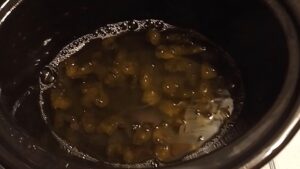
- When your soap paste only has small bits of soap floating, turn off the heat and let the soap set inside the slow cooker (with lid) until it cools down completely. If you have added enough water, the soap paste will be completely gone. If it's more concentrated, small bits will be present.
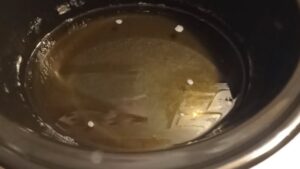
- The final result should be a yellow colored slightly viscous liquid. You should be able to use a small portion and wash your hands with it.

- Add your essential oils and the preservative to the liquid soap and mix well. I tend to pour the soap into the jars first, then measure the essential oils and preservative according to the jar quantity – 500g. You can do as you prefer. The quantities in the recipe are set to use 550g pf soap paste and 1,5 liters of water for dilution. If you want to make as I did, use 0,5% of liquid germall plus (500g x 0,5% = 2,5g) and 0,5%-1% (500g x 0,5% or 1% = 2,5g or 5g) of essential oils.
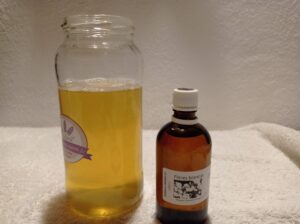
- Your liquid soap most likely will cloud with the addition of essential oils, if it's not already opaque when it cools down. With shea butter, both soap paste and liquid soap are yellowy and opaque. Translucent soap is more likely to happen with olive oil recipes.
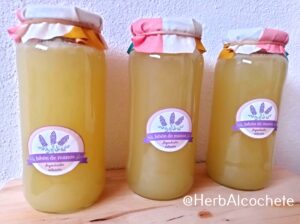
- Store your liquid soap in glass jars with lid, or use it in a pump dispenser. Doesn't need curing as all saponification happened when making the soap paste – your liquid soap is ready to use!
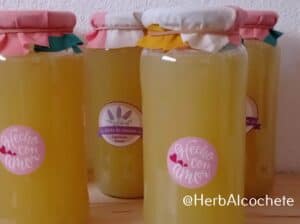
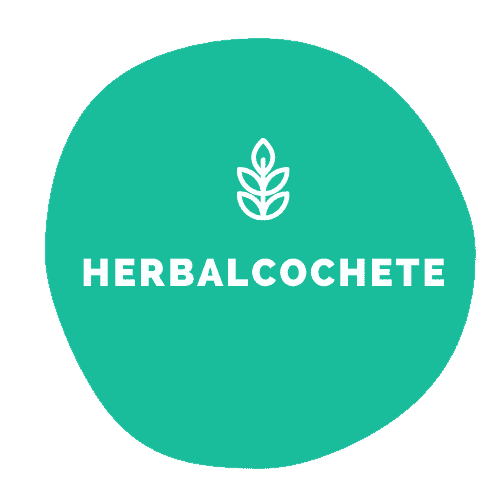
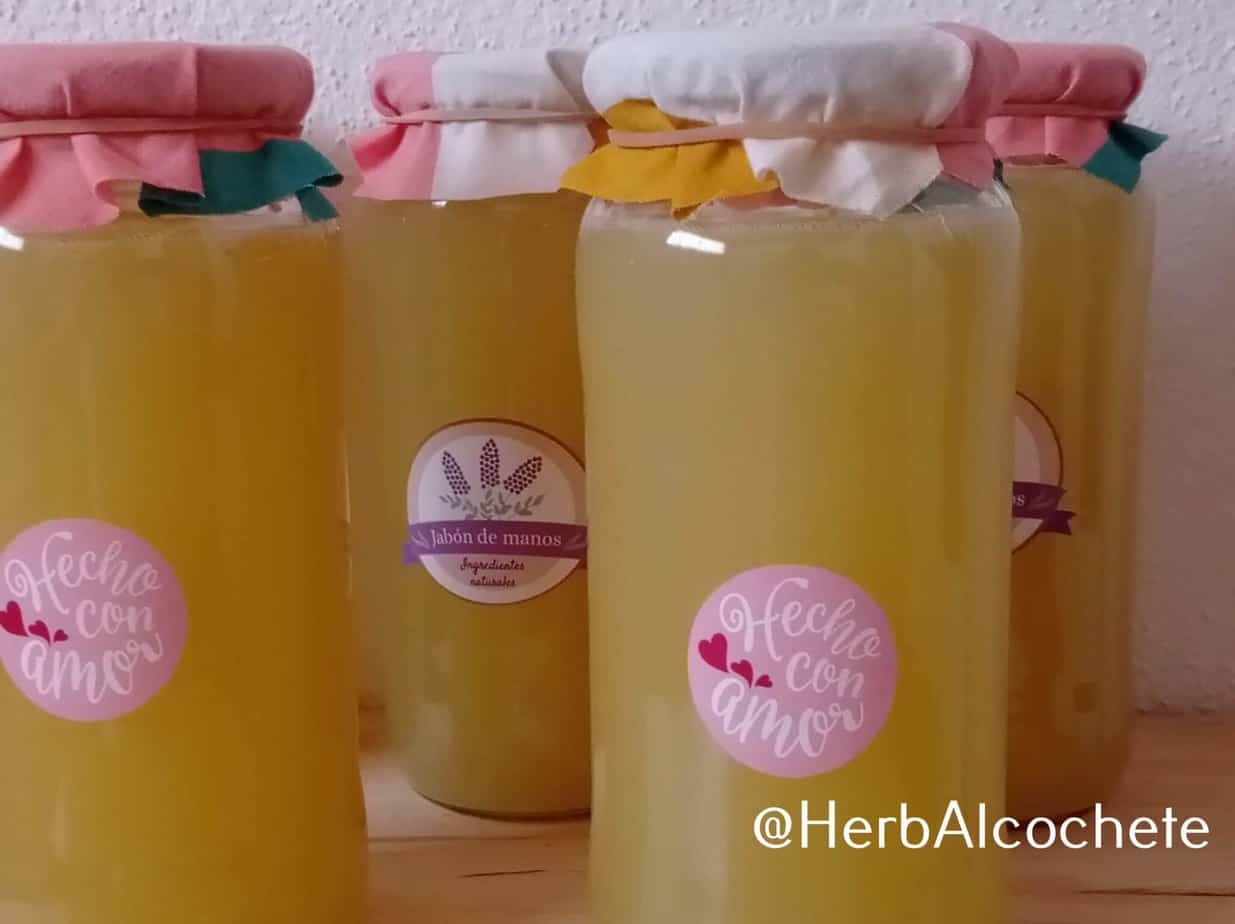

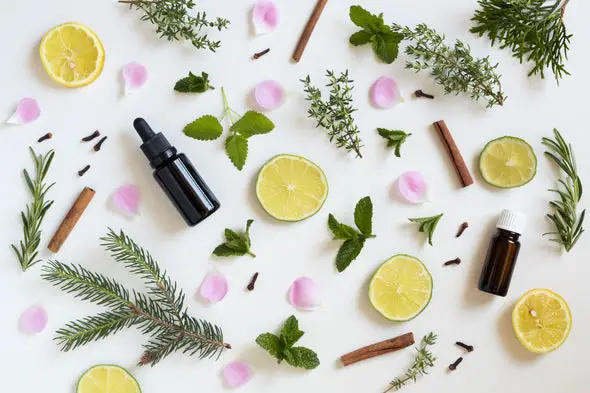


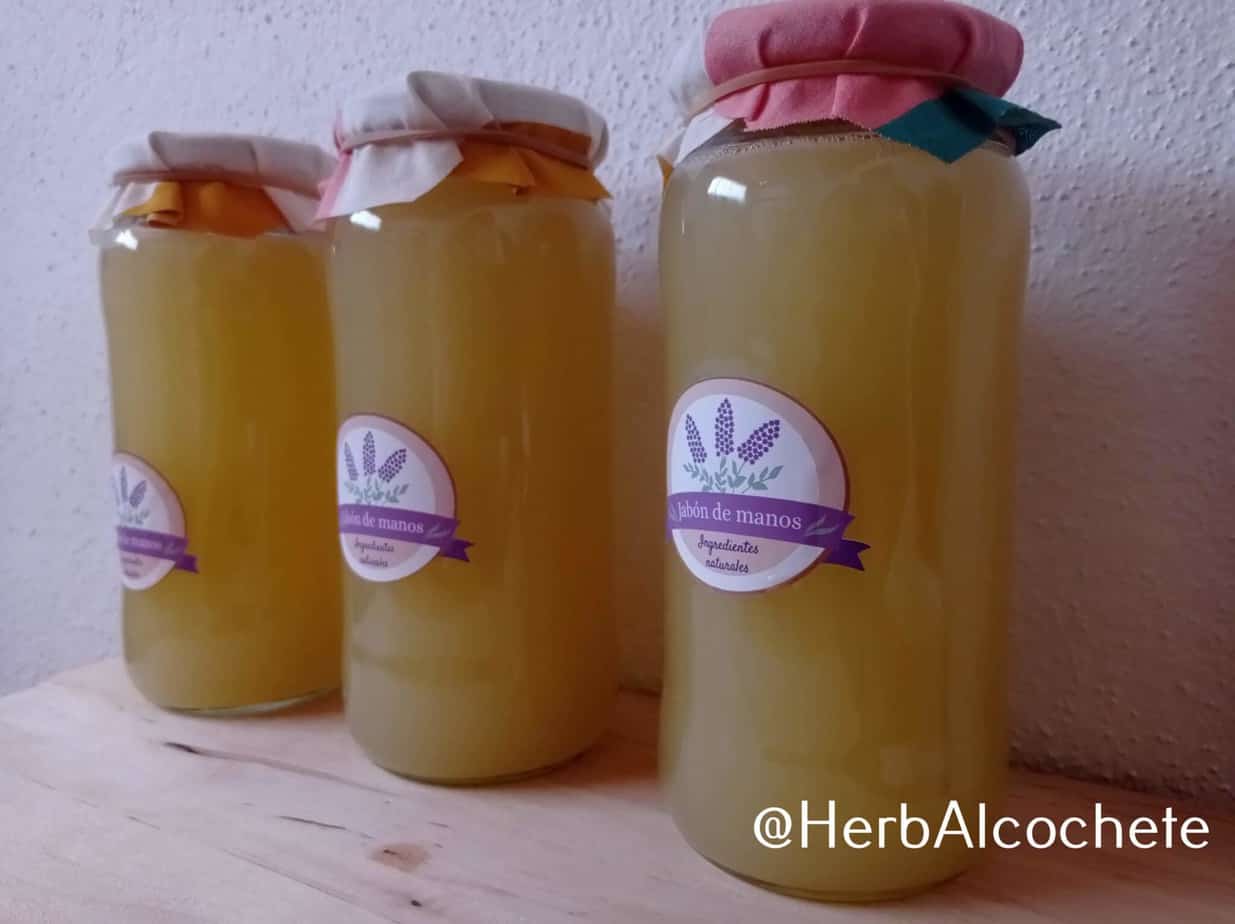
Can I just say that I love your article. This is actually a way to save money while having your own soap. My mom is always complaining how we finish the soap in the house so this is perfect for us. I will definitely purchase one of these liquid soap.
Hello Daniel and thanks for your comment.
Liquid handmade soap with shea butter is amazing, very moisturizing and soft. Whether you purchse it or make it yourself I do advise it, as hand soap or a shower gel.
Cheers,
Sofia